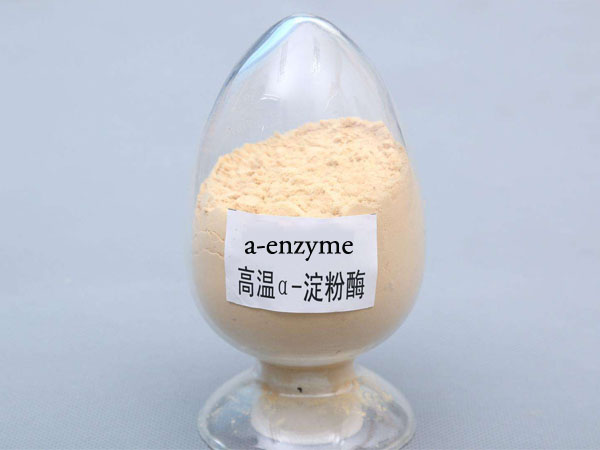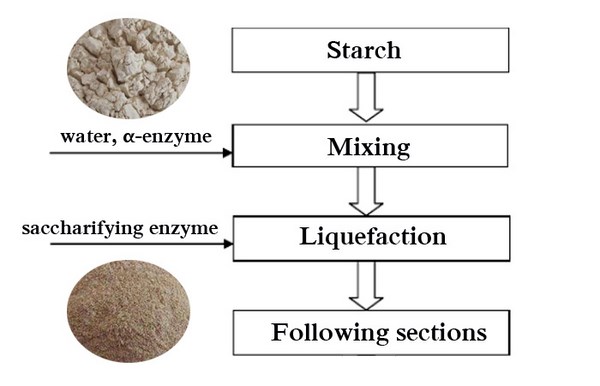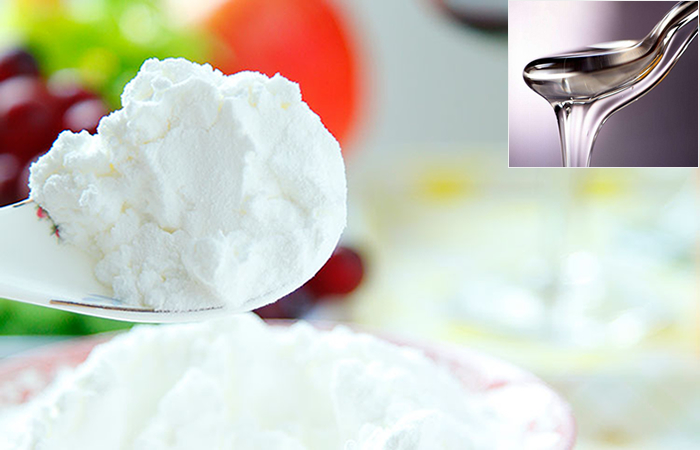What are the enzymes involved in starch hydrolysis?
2018-12-10 / FAQamylase and saccharification enzyme
The double enzymatic method is a process of hydrolyzing starch into glucose by using a highly specific amylase and saccharifying enzyme as a catalyst. Starch hydrolysis is carried out in two steps: in the first step, liquefaction is carried out with a high temperature resistant a-enzyme; in the second step, the liquefaction liquid is further hydrolyzed to glucose with a starch saccharifying enzyme to achieve a DE value of 98% or more.
 a-enzyme
a-enzyme
The gelatinized starch is easily liquefied by partial hydrolysis with an enzyme or an acid, and is saccharified by further acidic or enzymatic hydrolysis. The acid hydrolysis of starch has been widely used in the past, and it is now largely replaced by enzyme method processes because acid hydrolysis of starch requires the use of corrosion-resistant materials, producing high color and brine content (after neutralization), requiring more energy to used for heating and relatively difficult to control.
Enzymatic conversion of starch has three stages:
Gelling: dissolving starch granules to form a viscous suspension;
Liquefaction: involving partial hydrolysis of starch, accompanied by loss of viscosity;
Saccharification: involves the production of glucose and maltose by further hydrolysis.
 Enzyme for starch hydrolysis
Enzyme for starch hydrolysis
The names of commercially available enzymes for the hydrolysis of starch are somewhat confusing, and the EC number sometimes mixes enzymes with subtle different activities. For example, a-amylases can be subdivided into liquefied or saccharified amylases, but even this classification is not sufficient to include all enzymes used for commercial starch hydrolysis.
Various manufacturers use different starch liquefaction methods when using a-enzyme, but the principles are the same. The granular starch was slurried with cold water at pH 6.0-6.5, containing 20-80 ppm Ca 2+ (which stabilizes and activates the enzyme) added with enzyme (by metering pump). a-enzyme is usually supplied with high activity such that the enzyme dose is 0.5-0.6 kg / l (about 1500 U kg-1 dry matter) starch, and the starch-enzymed slurry is continuously pumped through a jet cooker, using steam to heat to 105°C. Gelatinization occurs very rapidly, and enzyme activity combines with significant shear forces to initiate hydrolysis. The residence time of the jet cooker is very short. The partially gelatinized starch was passed through a series of holding tubes maintained at 100-105 °C for 5 minutes to complete the gelation process. The hydrolysis of the desired DE is completed in a holding tank at 90-100 °C for 1 to 2 hours. These cans are equipped with baffles to prevent back mixing. A similar method can be used with the hydrolyzed Bacillus amyloliquefaciens a-enzyme, but the maximum temperature cannot exceed 95 °C.





